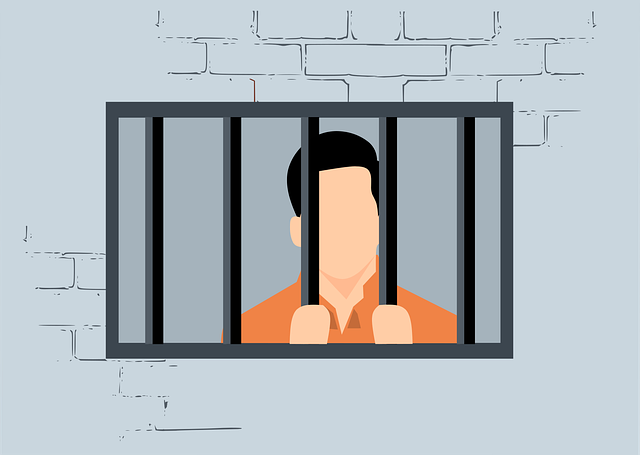Youth Justice and Fair Treatment are interconnected, requiring equitable treatment of marginalized young people within the criminal justice system. Alternative transportation options like community-based programs, restorative justice, and specialized courts offer personalized solutions for skill development, accountability, and healing, reducing traditional incarceration. In the digital age, ride-sharing apps, e-scooters, and youth transit programs enhance fairness, improving access to services for underserved communities, fostering independence, and building trust with authority figures. Inclusive policies, dedicated youth services, and community partnerships are crucial for successful equitable transport solutions, empowering at-risk youth to navigate their communities independently and reducing recidivism rates.
Youth justice systems worldwide are undergoing transformations to ensure fair treatment and equal opportunities for young people, especially through innovative approaches like alternative transportation. This comprehensive article explores these evolving concepts, focusing on understanding youth justice and its intersection with equitable access to transport. We examine the impact of alternative transportation options on juvenile justice, present best practices for implementation, and share inspiring case studies of successful programs that enhance youth justice through improved mobility.
- Understanding Youth Justice and Fair Treatment: A Comprehensive Overview
- The Impact of Alternative Transportation on Juvenile Justice Systems
- Best Practices for Implementing Equitable Transport Solutions for Youth
- Case Studies: Successful Youth Justice Programs with Enhanced Transportation Options
Understanding Youth Justice and Fair Treatment: A Comprehensive Overview

Youth Justice and Fair Treatment go hand in hand, aiming to ensure that young people are treated equitably within the criminal justice system. It’s a comprehensive approach that considers not only punishment but also rehabilitation and reintegration. Understanding this concept involves recognizing the unique needs and challenges faced by youth, who often require distinct approaches compared to adults. This includes addressing systemic issues like bias and discrimination, which can disproportionately affect marginalized young people.
Delving into this topic reveals the importance of alternative transportation options as a key strategy. Providing alternatives to traditional incarceration allows for more personalized solutions, catering to the specific needs of young offenders. These options range from community-based programs, restorative justice practices, and specialized courts, all aimed at fostering accountability, healing, and skill development in a supportive environment. By exploring such innovative approaches, we can contribute to a more just and effective youth justice system.
The Impact of Alternative Transportation on Juvenile Justice Systems

In today’s digital era, exploring alternative transportation options has become a game-changer in juvenile justice systems. By embracing innovative mobility solutions, such as ride-sharing apps, e-scooters, and dedicated youth transit programs, we can significantly enhance the fairness and efficiency of justice services for young people. These options not only reduce reliance on traditional, sometimes limited public transport but also offer flexibility and accessibility, ensuring that juveniles, especially those from underserved communities, have better access to court appearances, counseling sessions, and other essential services.
Alternative transportation methods also foster a sense of independence and responsibility in young individuals. Programs designed around these options can teach youth about time management, safety, and sustainable mobility choices. This approach not only prepares them for adult life but also helps to build trust and improve their interactions with authority figures, contributing to more positive outcomes within the juvenile justice system.
Best Practices for Implementing Equitable Transport Solutions for Youth

When designing equitable transport solutions, it’s crucial to consider alternative transportation options tailored to the unique needs of youth. This involves recognizing and addressing barriers that may prevent young people from accessing traditional public transit, such as limited mobility, lack of access to resources, or cultural differences. Implementing inclusive policies and infrastructure, like dedicated youth-focused transport services, affordable tickets, and accessible stations, can significantly enhance participation and independence for young individuals.
Community partnerships with organizations serving at-risk youth are key to success. These collaborations can facilitate the development of specialized programs, such as safe rides home initiatives, after-school transportation hubs, or community-based mobility training. By integrating alternative transportation options into existing support systems, we create a supportive ecosystem that empowers young people to navigate their communities independently and equitably.
Case Studies: Successful Youth Justice Programs with Enhanced Transportation Options

In many urban areas, youth justice programs are recognizing the impact of transportation accessibility on young people’s lives and their involvement in the justice system. Case studies have shown that providing alternative transportation options can significantly reduce recidivism rates and improve overall outcomes for at-risk youth. For example, some cities have implemented specialized bus services tailored to the needs of young offenders, offering flexible routes and later hours to ensure they can access employment, education, and community programs without facing barriers due to limited or unreliable public transport.
These innovative programs not only address the practical challenges faced by young people but also foster a sense of independence and responsibility. By integrating alternative transportation options into youth justice initiatives, communities are empowering young individuals with opportunities for positive engagement, reducing their reliance on potentially dangerous methods of getting around, and ultimately promoting successful reintegration into society.
In conclusion, addressing youth justice and promoting fair treatment requires a multifaceted approach. By integrating alternative transportation options into juvenile justice systems, we can significantly reduce disparities and improve outcomes for young people. The case studies presented highlight successful programs that prioritize equitable transport solutions, demonstrating their potential to revolutionize youth justice. As we move forward, adopting best practices and implementing these innovative strategies on a wider scale is essential to create a more just and inclusive society for all young individuals.






